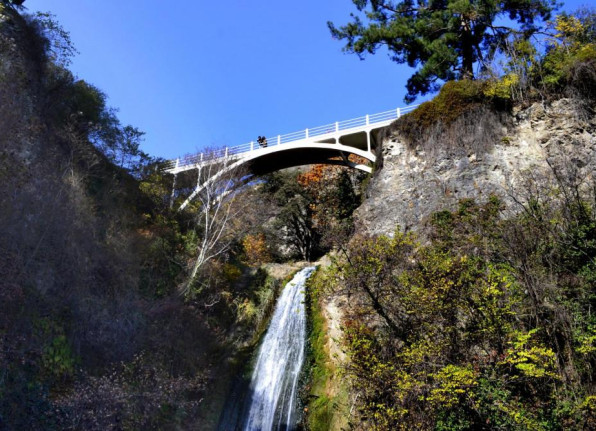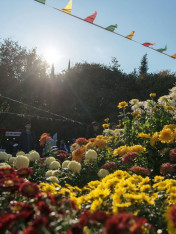 Menu
Menu
-
Experiences
-
Experiences
-
Posters
Menu
-
Categories
-
Places
Menu
- Galleries LICHT Gallery ExpoGeorgia IArt Gallery Dimitri Shevardnadze National Gallery Tbilisi Digital Space
- City sites Mtatsminda Park Mziuri Park Vake Park April 9 (Alexander) garden Shota Rustaveli Avenue
- Children's studios Creative center Art BOOM Tamashobana Happy Kids Art Club Ferdinand farm GinGer
- Ecclesiastical institutions Tbilisi Yoga Loft TBILISI YOGA VILLA Transcendental Meditation Georgia Lumos Yoga Cave
- Event spaces KERA Space Gardenia Shevardnadze Orbeliani Bazaar Fabrika bibliotheque_tbilisi
- Cafe-restaurants Blue Fox Restaurant Tsiskvili Utskho 8000 Vintages Wasserstrasse
- Cinemas Amirani Cinema Cavea City Mall Saburtalo Cavea Grand Mall Cavea Tbilisi Mall Cavea East Point Cavea Galleria
- Concert halls Kakhidze Music Center Monohall MONUMENT Tbilisi Concert Hall Tbilisi Sports Palace
- Lecture halls Terminal Auditoria Colab TBC Concept PRANA
- Museums Georgian Museum of Fine Arts Georgian National Museum Experimentorium Holoseum Zurab Tsereteli Museum of Modern Art
- Nightclubs/bars Love Bar Underwheel club Dedaena Bar KHIDI MTKVARZE
- Educational institutions Institut Français de Géorgie Beka's School BTU The Thinking Academy Japanese Language & Culture Center
- Public organizations Georgian Historic Vehicles Association Georgian-Ukrainian platform (Ukrainian House) The Samaritan Association of Georgia Blood Bank
- Hotels Tbilisi Hills & Residence Pullman Tbilisi Axis Towers Stamba Hotel Sheraton Grand Tbilisi Metechi Palace Holiday Inn Tbilisi
- Sports grounds Dinamo Arena Mikheil Meskhi Stadium Hippodrome Lisi Lake Lilo Arena Paichadze Stadium
- Theaters Nodar Dumbadze Theater (ნოდარ დუმბაძის თეატრი) Tbilisi Circus Royal District Theatre Griboedov Theatre Gabriadze Theatre
-
Categories
-
Posters
-
Categories
-
Places
Menu
- Galleries LICHT Gallery ExpoGeorgia IArt Gallery Dimitri Shevardnadze National Gallery Tbilisi Digital Space
- City sites Mtatsminda Park Mziuri Park Vake Park April 9 (Alexander) garden Shota Rustaveli Avenue
- Children's studios Creative center Art BOOM Tamashobana Happy Kids Art Club Ferdinand farm GinGer
- Ecclesiastical institutions Tbilisi Yoga Loft TBILISI YOGA VILLA Transcendental Meditation Georgia Lumos Yoga Cave
- Event spaces KERA Space Gardenia Shevardnadze Orbeliani Bazaar Fabrika bibliotheque_tbilisi
- Cafe-restaurants Blue Fox Restaurant Tsiskvili Utskho 8000 Vintages Wasserstrasse
- Cinemas Amirani Cinema Cavea City Mall Saburtalo Cavea Grand Mall Cavea Tbilisi Mall Cavea East Point Cavea Galleria
- Concert halls Kakhidze Music Center Monohall MONUMENT Tbilisi Concert Hall Tbilisi Sports Palace
- Lecture halls Terminal Auditoria Colab TBC Concept PRANA
- Museums Georgian Museum of Fine Arts Georgian National Museum Experimentorium Holoseum Zurab Tsereteli Museum of Modern Art
- Nightclubs/bars Love Bar Underwheel club Dedaena Bar KHIDI MTKVARZE
- Educational institutions Institut Français de Géorgie Beka's School BTU The Thinking Academy Japanese Language & Culture Center
- Public organizations Georgian Historic Vehicles Association Georgian-Ukrainian platform (Ukrainian House) The Samaritan Association of Georgia Blood Bank
- Hotels Tbilisi Hills & Residence Pullman Tbilisi Axis Towers Stamba Hotel Sheraton Grand Tbilisi Metechi Palace Holiday Inn Tbilisi
- Sports grounds Dinamo Arena Mikheil Meskhi Stadium Hippodrome Lisi Lake Lilo Arena Paichadze Stadium
- Theaters Nodar Dumbadze Theater (ნოდარ დუმბაძის თეატრი) Tbilisi Circus Royal District Theatre Griboedov Theatre Gabriadze Theatre
Posters
-
Categories

National Botanical Garden of Georgia
1, Botanikuri Str.
The Tbilisi Botanical Garden is located in the historical center of Tbilisi, south of the Sololaki ridge, in the valley of the Legvta-Khevi river. Georgian and world flora is widely represented in the botanical garden. There are three bridges across the Tsavkisistskali River on the territory of the botanical garden.
National Botanical Garden of Georgia
Event archive

Event already passed
 National Botanical Garden of Georgia
National Botanical Garden of Georgia
from 0.50 ₾

Event already passed
 National Botanical Garden of Georgia
National Botanical Garden of Georgia
Why Visit the National Botanical Garden of Georgia
The National Botanical Garden in Tbilisi is more than just a place for strolls; it is a picturesque green oasis nestled in the heart of the bustling city. This natural sanctuary, hidden away amidst the urban hustle and bustle, offers visitors a rare opportunity to relax and find harmony with the surrounding world. The garden is located on the southern outskirts of Tbilisi’s historic center, in the enchanting valley of the Tsavkisistskali River, where nature and history organically blend, transforming the area into a unique corner for inspiration and the enjoyment of beauty.
The garden perfectly combines natural beauty with the atmosphere of the ancient city, offering visitors the chance to forget the city's noise for a few hours and enjoy solitude among the greenery. It is hidden from the eyes of outsiders, like a carefully guarded jewel, making it especially attractive for those seeking quiet spots for rest and meditation.
On one side, the botanical garden is surrounded by majestic cliffs that lend the place an air of seclusion. These natural barriers create the sensation that you are in another world, where peace and silence prevail, far from the hustle and bustle of the city. On the other side, the garden borders Tbilisi’s oldest district, known for its narrow streets, ancient architecture, and picturesque atmosphere.
History of the Botanical Garden
The National Botanical Garden in Georgia in Tbilisi has a long and rich history dating back to ancient times. In antiquity, local plants were known for their medicinal properties. A Greek myth mentions a mysterious land where gardens with medicinal herbs were grown and used by mythological figures. These legends are confirmed by historical records, such as the writings of travelers who visited the region and mentioned green plantations and gardens in various parts of the city.
Later, the garden continued to play a key role in the country’s life, especially given its strategic location on an important trade route connecting different parts of the world. This highlights the cultural and historical significance of the space for the country and its connections with other nations.
The garden’s modern development began in the mid-19th century when it was granted official status. During this time, botanical research was conducted, horticulture was actively developed, and various structures were built to improve conditions for plant life. Over time, the garden became a center for scientific research, and its plant collections expanded significantly.
Today, the National Botanical Garden of Tbilisi is a large complex with a diverse range of flora that continues to function in both scientific and cultural spheres, including modern greenhouses and scientific departments focused on rare plants and nature conservation.
How to Get to the Tbilisi Botanical Garden
There are two ways to reach the Tbilisi Botanical Garden, depending on which route you find more convenient.
The first option is to enter through the main entrance, located near the Narikala Fortress. To do this, you need to walk along Botanical Street, pass by the sulfur baths, and the only mosque in the city.
The second option is to take the cable car, which not only provides convenience but also offers breathtaking panoramic views of the city. The lower station of the cable car is located in Rike Park, near Europe Square, and the upper station is on the Sololaki Hill, near Narikala Fortress. From there, it is easy to follow the signs to reach the garden. During the ascent, you can enjoy stunning views of Tbilisi from above, and if you want to take a break, you can stop at the viewing platform. For those who enjoy active recreation, there is a zip line.
What to See in the Tbilisi Botanical Garden
The best time to visit the National Botanical Garden in Tbilisi is from early spring to autumn when most of the plants are in bloom. During this period, the garden reveals all its colors and fragrances, becoming especially beautiful and picturesque. However, besides the inspiring landscapes, there are several unique places in the garden that are worth attention:
- The Tsavkisistskali River and waterfall — one of the most picturesque spots in the garden. The river runs through the botanical garden, creating a secluded atmosphere, while the nearby Legvtakhevi waterfall is not only a natural landmark but also a great spot for photos.
- The Pantheon of Distinguished Azerbaijanis — located within the garden, this is the final resting place of notable Azerbaijani figures such as scientists, writers, and revolutionaries. This pantheon symbolizes the historical connection between Georgia and Azerbaijan.
- The Lilac Garden (Siringari) — this corner of the garden is especially striking during the lilac bloom. It features a variety of lilac species, and in May and June, this area is filled with a stunning fragrance.
- The Japanese Garden — this place immerses visitors in an Eastern atmosphere. It features authentic Japanese plants, including sakura, which is particularly beautiful in the spring. The Japanese garden is the perfect place for meditation and relaxation.
- The Alley of Forgotten Fruits — a corner of the garden dedicated to the memory of the great Italian playwright Tonino Guerra. This garden was a collaborative project with his gardener friend and includes rare varieties of fruit trees. In honor of Guerra and his horticultural legacy, the Alley of Forgotten Fruits was created in Tbilisi. The saplings for this garden were donated by his wife, Laura.
Thus, the botanical garden in Tbilisi is not only a place of natural landscapes but also a venue where visitors can explore unique landmarks that attract both nature lovers and tourists eager to immerse themselves in the atmosphere of Georgian flora and culture.
Opening Hours and Ticket Prices of the Tbilisi Botanical Garden
The Tbilisi Botanical Garden is open year-round, every day from 9:00 AM to 7:30 PM, allowing visitors to enjoy its beauty at any time of the year.
The entrance fee for adults is 4 Georgian Lari, a very reasonable price for such a unique place. For students, a single visit to the botanical garden costs 1 Lari, and the children’s ticket is just 50 Tetri, making the garden accessible for families with children. Moreover, entry is completely free for young children who have not yet reached school age. There is also a special family ticket available for families who want to spend the day in the garden together. The price of this ticket is only 6 Lari.
Events and Festivals in the Tbilisi Botanical Garden
The Tbilisi Botanical Garden regularly hosts various cultural events and festivals that attract not only city residents but also travelers from around the world. For example, during the summer, the garden holds a popular ice cream festival, where guests can try various ice cream flavors from the best producers while enjoying the scenic views and pleasant atmosphere.
In winter, the garden hosts the New Year’s Chocolate Festival, a true celebration for chocolate lovers and the entire family. Here, you can not only sample different types of chocolate but also enjoy the winter decorations in the garden, which transforms into a magical place during this time, immersing everyone in the festive winter spirit.
To stay up to date with events in the botanical garden and throughout Tbilisi, check the event poster on the Yolo online gift shop’s website. Here, you can find current information about cultural events, festivals, and concerts. If you're looking for the perfect gift, consider Yolo’s gift certificates — a universal solution for any occasion, sure to provide a wealth of emotions.
Sign up for the newsletter



